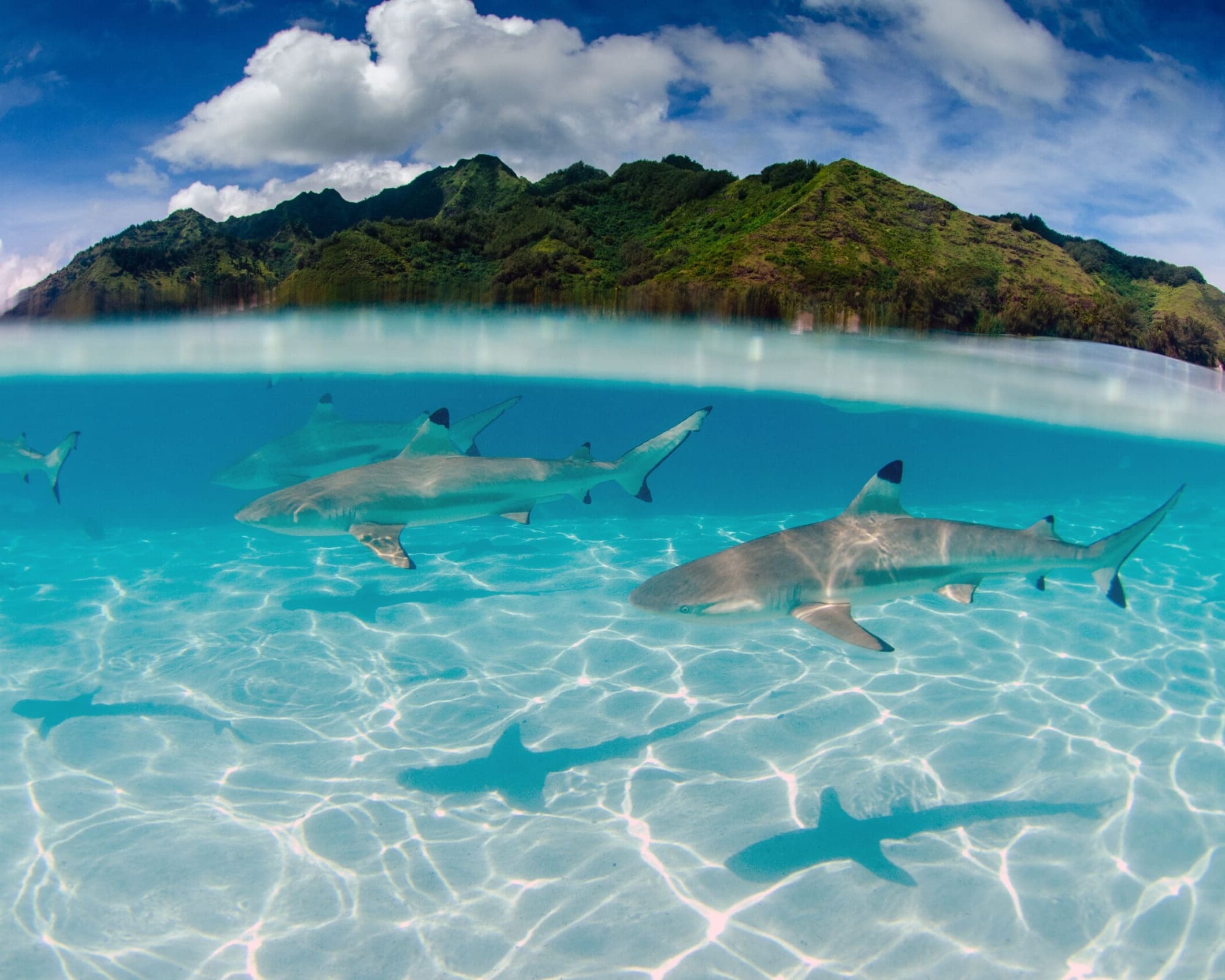Welcome to French Polynesia, an enchanting paradise where the embrace of lush landscapes meets the endless caress of the Pacific Ocean.
This collection of over a hundred islands, including the world-renowned Tahiti, Bora Bora, and Moorea, offers a dreamscape where the vibrant blues of the sea blend seamlessly with the sky. French Polynesia beckons with its white-sand beaches, crystal-clear waters, and coral reefs teeming with life, promising an unparalleled escape into nature’s most exquisite creations.
Here, luxury and serenity are a way of life, from overwater bungalows that offer a private slice of heaven to the warm, welcoming embrace of Polynesian culture. Explore the rich tapestry of island life, where traditional dances, music, and art flourish amidst the backdrop of towering volcanic peaks and lush rainforests.
Whether you’re seeking the ultimate romantic getaway, an adventure through untouched natural beauty, or a tranquil retreat to recharge your spirit, French Polynesia delivers with grace and majesty. Dive into the depths to discover a world beneath the waves, sail the infinite blue horizons, or simply soak in the sun on shores that seem designed by the gods.

The Best Time To Visit
The best time to visit French Polynesia is during its dry season, from May to October. During these months, the weather is cooler, drier, and less humid, making it ideal for enjoying the islands’ outdoor activities, such as snorkeling, diving, and beach relaxation. This period also sees less rainfall compared to the rest of the year, ensuring clearer skies and more sunny days to explore the breathtaking landscapes and vibrant marine life.
However, this is also the peak tourist season, so you can expect higher prices and more crowded spots, especially in popular destinations like Bora Bora and Moorea. For travelers looking for a quieter experience or better deals, the shoulder months of April and November might offer a good balance between pleasant weather and lower tourist volumes.
Keep in mind that even during the rainy season (November to April), French Polynesia’s climate remains warm and enjoyable, with occasional showers mostly occurring in the late afternoon or evening, and plenty of sunshine between them. If you don’t mind a bit of rain and are looking for lush landscapes and fewer crowds, this could be a cost-effective time to visit.
What To Know
Travelers to French Polynesia will primarily encounter French and Tahitian as the main languages spoken. French is the official language.
English is widely spoken in tourist areas, hotels, and resorts, making communication relatively easy for English-speaking visitors. However, outside these areas, English proficiency can vary.
Tahitian, part of the wider family of Polynesian languages, is commonly used in daily conversation among locals, especially on the more remote islands.
Learning a few basic phrases in French or Tahitian can enhance your travel experience and is greatly appreciated by the locals.
In French Polynesia, the currency used is the Pacific Franc.
When traveling to French Polynesia, you’ll use this currency for most transactions, including dining, shopping, and services.
It’s a good idea to have some cash on hand for small purchases, though credit cards are widely accepted in hotels, restaurants, and many shops, especially in more tourist-centric areas.
ATMs are available in larger towns and on the main islands, allowing for easy withdrawal of local currency.
French Polynesia is generally considered a safe destination for travelers, with low levels of crime and a welcoming atmosphere.
The islands are known for their laid-back lifestyle and friendly locals, making it a relaxed place to visit. However, as with any travel destination, it’s wise to take standard safety precautions to ensure a smooth and enjoyable trip.
Here are some tips:
- Natural Hazards: Be aware of natural risks such as strong currents and occasional tropical storms. Always respect local guidelines for swimming, snorkeling, and other water activities.
- Health: Protect yourself from mosquito-borne diseases by using repellent and wearing appropriate clothing, especially during the wet season. The sun can be intense, so sunscreen and hydration are key.
- Security: While violent crime is rare, petty theft can occur in busy tourist areas. Keep an eye on your belongings, use safes in accommodations for valuables, and avoid leaving items unattended, especially on beaches.
- Water Safety: Many activities in French Polynesia are water-based. Always use reputable operators for diving, boating, and other water sports, and ensure safety equipment is provided and in good condition.
Respecting local customs and the environment is also important for a harmonious visit.
Public transport in French Polynesia is limited but available on larger islands like Tahiti, primarily through a network of buses known as “Le Truck” and taxis.
“Le Truck” buses offer local service, though schedules may not align with tourist needs. Domestic flights operated by Air Tahiti provide quick inter-island travel, while ferries connect some islands for shorter distances.
Renting a car or scooter offers flexibility for exploring. Overall, while public transport exists, its availability and frequency may encourage visitors to consider alternative transportation options for convenience and exploration.
French Polynesia Travel Guides
February 5, 2024
The Top 10 Polynesian Islands
August 15, 2022
